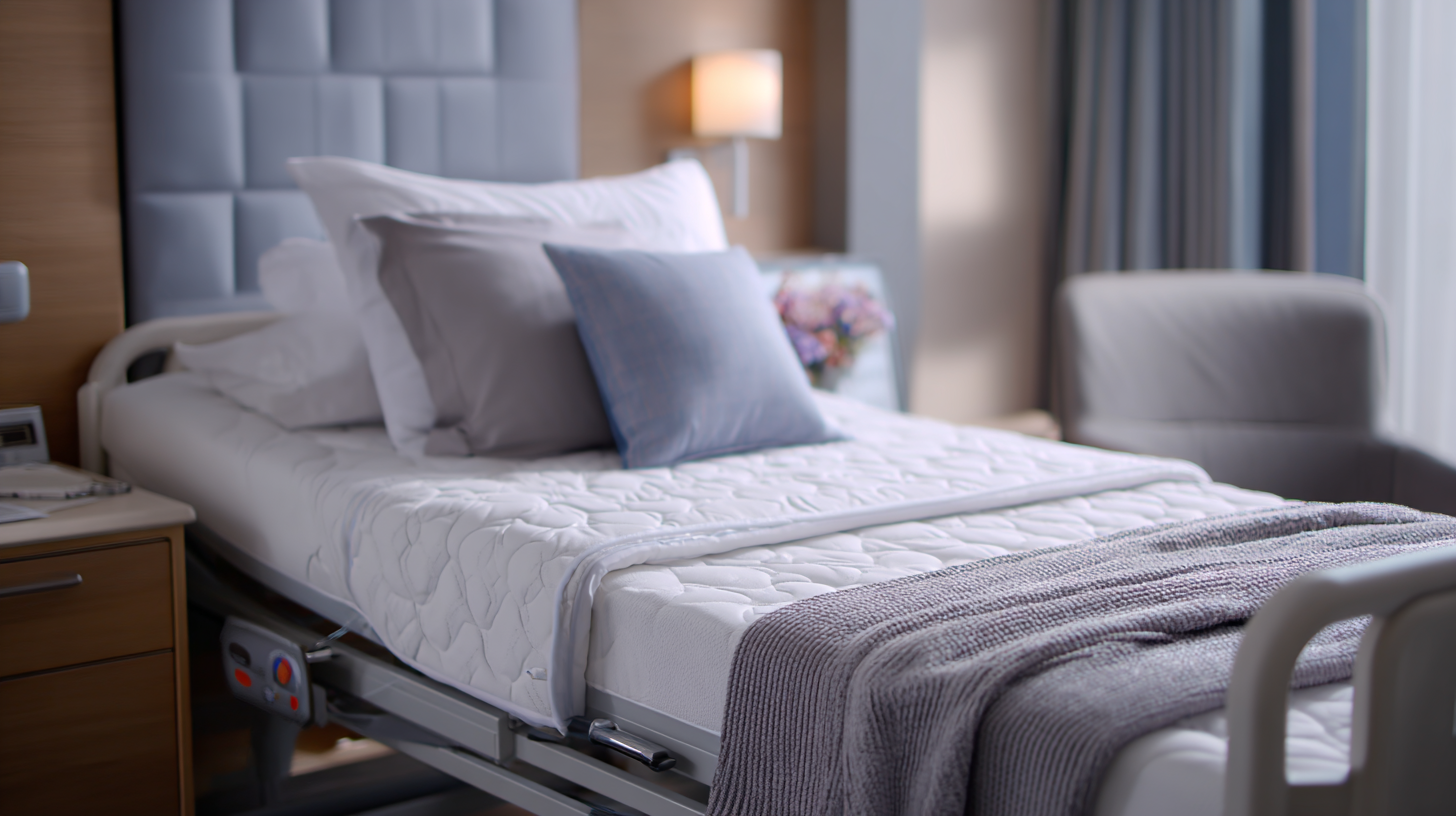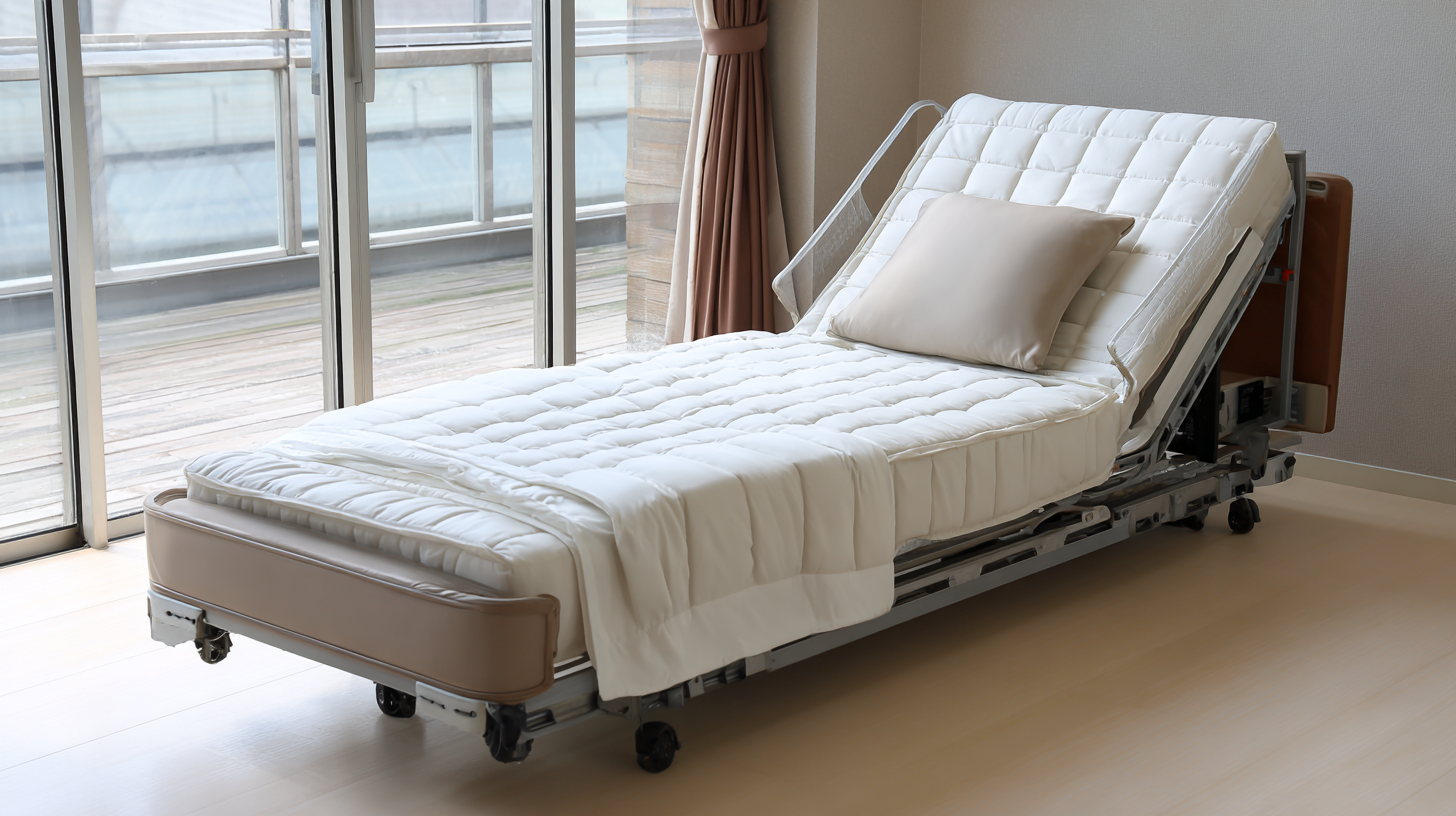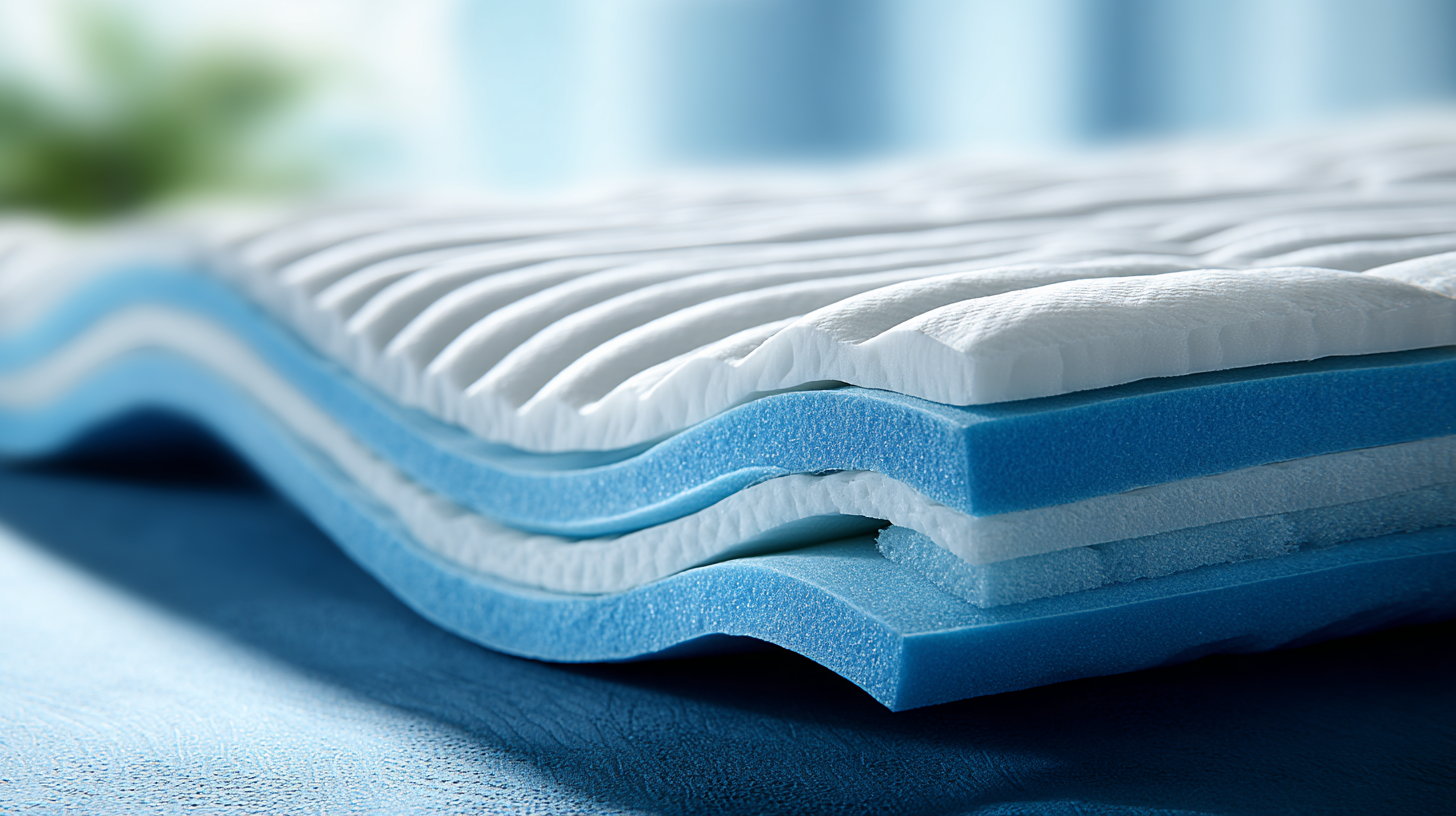In the realm of patient care, ensuring comfort and preventing complications associated with prolonged immobility are paramount. One essential tool in achieving these goals is the Decubitus Mattress, specifically designed to alleviate pressure points and promote circulation. With various options available on the market, selecting the ideal mattress can be a daunting task for healthcare professionals and caregivers alike. This blog aims to guide you through the critical factors to consider when choosing a Decubitus Mattress, aligning product features with patient needs while also addressing industry standards for import and export certifications.

Whether you're a healthcare provider, a facility manager, or a caregiver, understanding the nuances of these specialized mattresses is vital for delivering optimal patient care and enhancing recovery outcomes. Join us as we explore the essential criteria and expert tips for making an informed choice in this important aspect of healthcare.
Decubitus mattresses play a critical role in patient care, particularly in preventing pressure ulcers, which are serious complications associated with prolonged immobility. Statistics reveal that up to 30% of patients who are bedridden may develop pressure ulcers, leading to increased healthcare costs and prolonged hospital stays. Understanding these numbers highlights the necessity of selecting the right mattress as part of a comprehensive care strategy for vulnerable populations, including the elderly and those recovering from surgery.
When assessing the importance of decubitus mattresses, one must consider the various types available, such as foam, gel, and air-filled options. Each type comes with specific benefits and caters to different patient needs. Research indicates that high-quality mattresses not only reduce the risk of skin breakdown but also improve overall patient comfort, which is essential for recovery. By prioritizing the appropriate selection of decubitus mattresses, healthcare providers can enhance patient outcomes, decrease ulcer incidence, and foster a more effective healing environment.

When selecting the ideal decubitus mattress, understanding key features is essential to ensure optimal patient comfort. According to the National Pressure Ulcer Advisory Panel, pressure injuries affect around 2.5 million individuals in the U.S. each year, highlighting the critical importance of using specialized mattresses. Ideal decubitus mattresses often include pressure redistribution properties, which help to alleviate pressure points and improve blood flow, significantly reducing the risk of pressure ulcers.
One of the most critical features is the material used in the mattress. High-quality foam or air-filled mattresses are preferred for their ability to conform to a patient's body shape, providing enhanced support and comfort. A study published in the Journal of Wound Care shows that patients using pressure-relieving mattresses experienced a 30% reduction in pressure ulcer incidence compared to those with standard mattresses.
Tips for Choosing a Decubitus Mattress:
When selecting a decubitus mattress, understanding the different material options available is crucial for optimal patient care. Foam mattresses are well-known for their pressure-relieving properties, adapting to the body's contours. High-density foam varieties provide enhanced support, making them a popular choice for patients with limited mobility. However, over time, foam can lose its shape, necessitating regular replacement to maintain effectiveness.
Gel mattresses offer a modern alternative, combining support with temperature regulation. The gel layer effectively disperses pressure and helps prevent overheating, which is particularly beneficial for patients who spend extended periods in bed. While these mattresses require careful maintenance to avoid punctures, they can significantly enhance comfort and reduce the risk of bedsores.
Air pressure mattresses adjust automatically to redistribute weight and alleviate pressure points. This adjustability is particularly advantageous for patients at higher risk for pressure ulcers. However, they may require a power source and can be more costly than other options.
Tips:
- Always determine the patient's specific needs and lifestyle before choosing a mattress.
- Consider longevity and ease of maintenance to ensure the mattress remains effective over time.
- Consult with medical professionals for personalized recommendations based on the patient's condition.
As we look ahead to 2025, significant technological innovations in decubitus mattresses are poised to revolutionize patient care. The integration of smart materials will enhance pressure distribution and promote better blood circulation, effectively reducing the risk of pressure ulcers. These advanced mattresses will be equipped with sensors that continuously monitor the patient's position and vital signs, allowing for real-time adjustments to maintain optimal comfort and support.

Moreover, the incorporation of artificial intelligence will facilitate personalized patient care. AI algorithms can analyze a patient's specific needs and automatically adjust mattress settings to provide the best therapeutic outcomes. This not only enhances patient comfort but also empowers healthcare providers to make informed decisions based on accurate data. As these innovations take shape, they will not only improve the quality of care but also significantly reduce healthcare costs associated with preventable complications.
When assessing the cost-effectiveness of decubitus mattresses in healthcare settings, it is crucial to utilize advanced costing methods like Activity-Based Costing (ABC). A recent study highlighted the applicability of ABC in determining unit costs of medical services in a hospital setting, offering a more refined approach compared to traditional costing systems. By understanding the direct and indirect costs associated with decubitus mattress use, healthcare facilities can make informed decisions that enhance patient outcomes while optimizing resource allocation.
Furthermore, the ongoing challenges facing healthcare systems, such as those in the UK, underscore the importance of evaluating cost and efficiency. With rising healthcare costs and increasing patient loads, investing in high-quality decubitus mattresses can lead to significant long-term savings through reduced pressure ulcer incidence and subsequent treatments. Additionally, integrating smart bed technology, which monitors patient vitals and automatically adjusts to prevent pressure sores, could offer a more efficient use of resources and improve overall patient care in long-term facilities. By aligning the purchase of decubitus mattresses with evidence-based data on cost-effectiveness, healthcare providers can enhance patient care while adhering to budget constraints.
| Mattress Type | Pressure Relief Rating | Cost Per Unit | Estimated Lifespan (Years) | Maintenance Requirements | Recommended for Patients With |
|---|---|---|---|---|---|
| Foam Mattress | Medium | $200 | 5 | Low - Regular cleaning | Low Mobility, Risk of Pressure Ulcers |
| Air-Fluidized Mattress | High | $2,500 | 7 | High - Requires specific maintenance protocol | Severe Skin Issues, Extended Bed Rest |
| Gel Mattress | Medium-High | $800 | 6 | Medium - Occasional care | Moderate to High Risk of Pressure Ulcers |
| Hybrid Mattress | High | $1,500 | 8 | Medium - Regular monitoring needed | All Patients, Especially Those at Risk |
